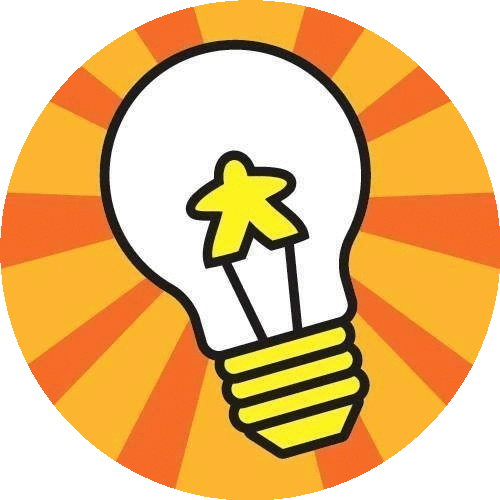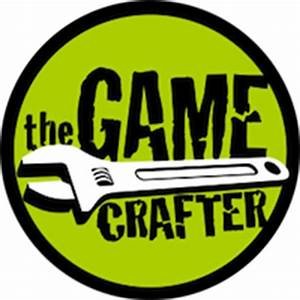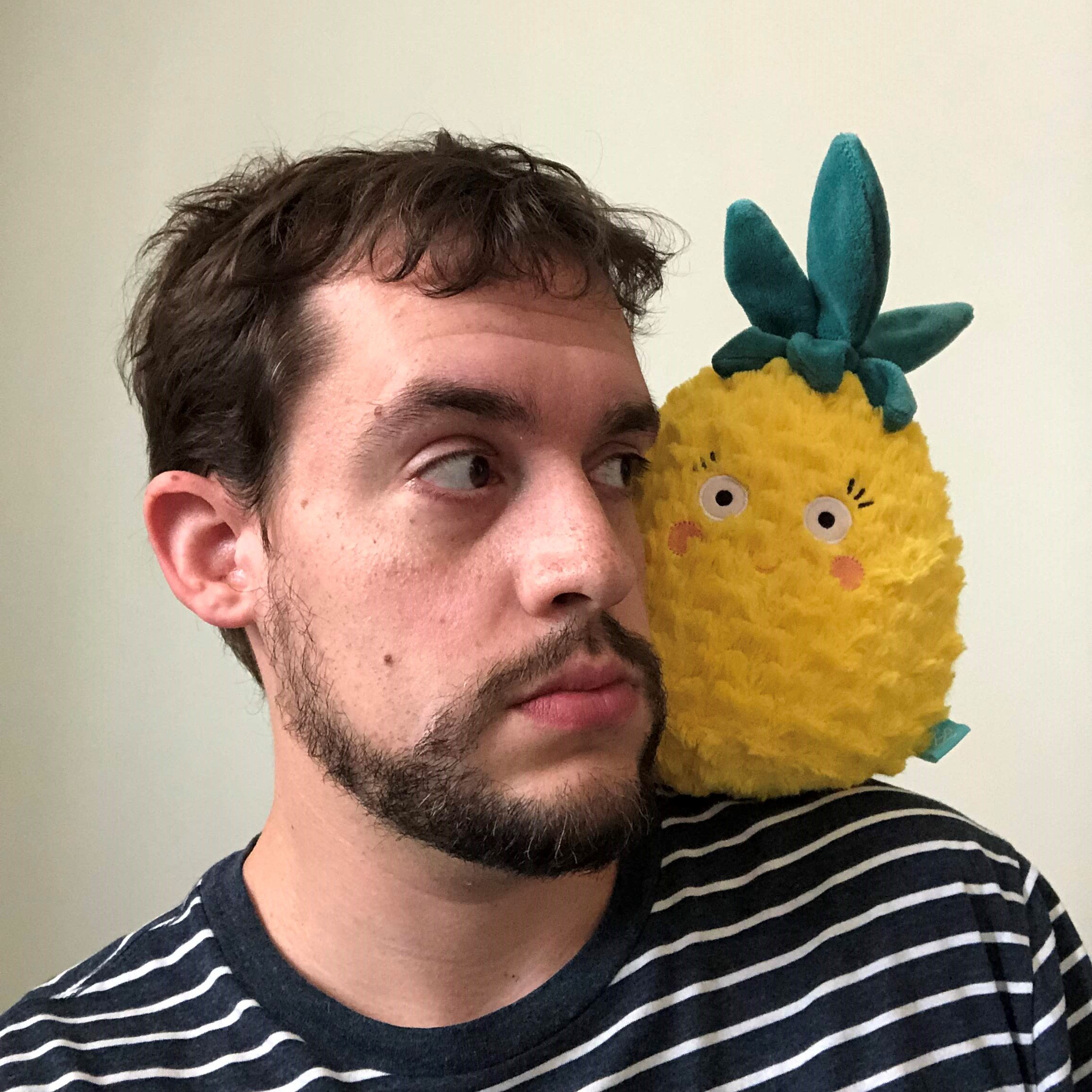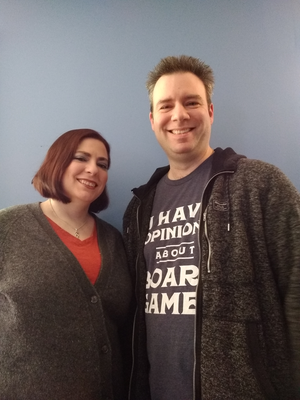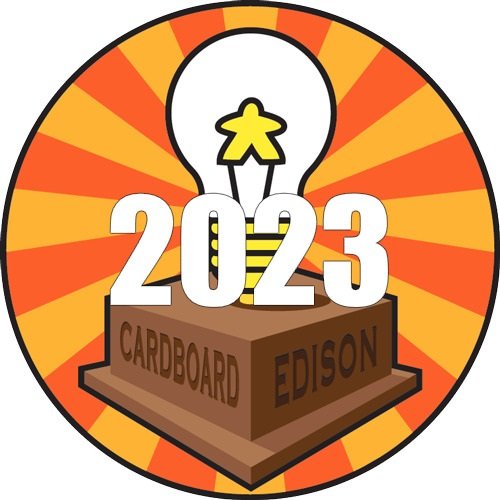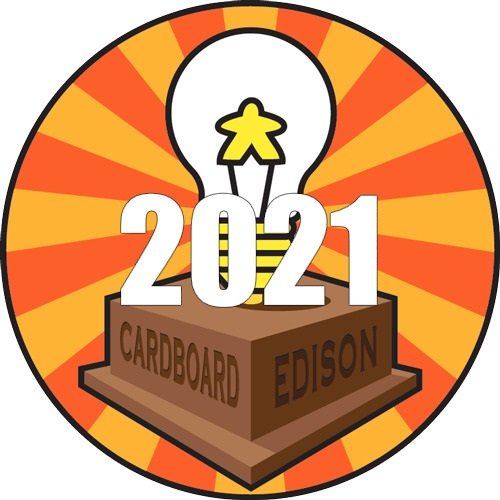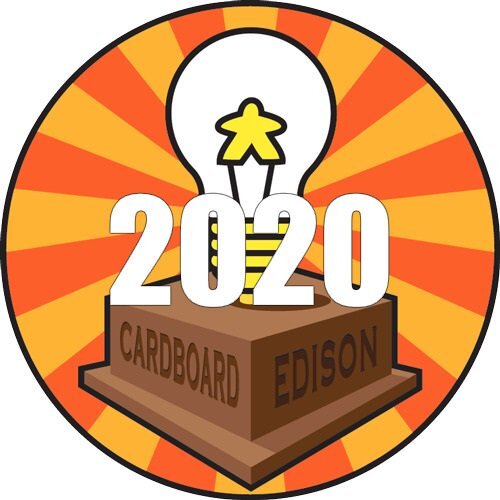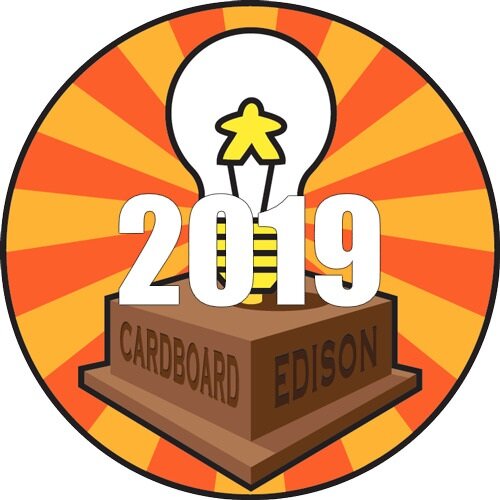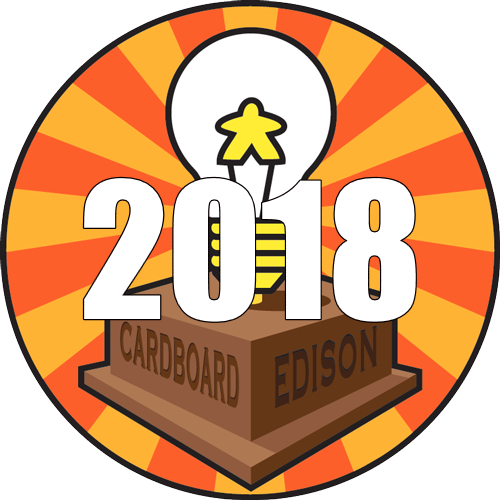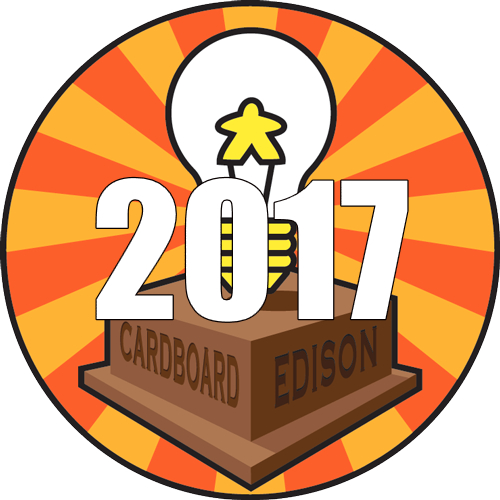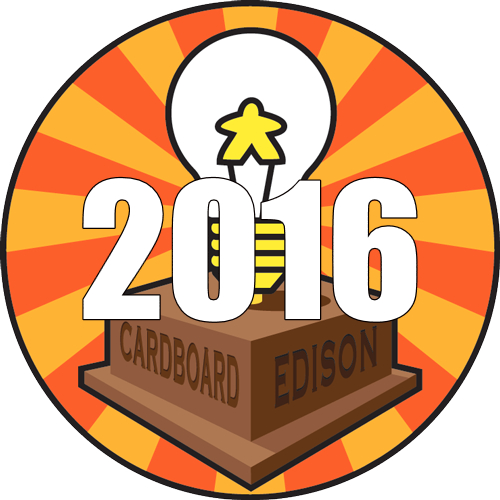Submissions for the 2026 Cardboard Edison Award are now open!
The Cardboard Edison Award recognizes great unpublished board games
Timeline for the 2026 Cardboard Edison Award
January 1: submissions open
January 31: submissions close
February: first-round judging
late February: finalists announced
April 8: finalist prototypes due
April: finalist judging
May: winners announced
Cardboard Edison Best Practices 2026
It’s out now! Our annual Cardboard Edison Best Practices booklet, filled with board game design tips and resources for every step of the process, is back!
In this edition, you’ll find:
How to make the most of a playtest group
What should be in a pitch video—and what shouldn’t
Mistakes to avoid with your prototype’s art
Onboarding players more smoothly
How to prepare for indie game markets
…and lots more!
2026 Supporters of Cardboard Edison
Alpha Player Supporters
Game Master Supporter
Kingmaker Supporters
Meeple Supporters
Judges for the 2026 Cardboard Edison Award
More judges coming soon!
See the results from previous years’ Cardboard Edison Award
Rules for the 2026 Cardboard Edison Award
Submissions:
Submissions must include a brief description of the game, a 3-minute video overview, and a rules document, in addition to a $25 submission fee (or Patreon code). See the submissions page for full guidelines.
Judging process:
Submissions will go through two rounds of judging.
First-round submissions will be judged based on:
engagement
originality of theme
originality of mechanics
Finalists will be judged based on:
engagement
smoothness of play
fit for target audience
In both rounds, judges will consider how each game handles its theme.
Finalists will need to mail us a physical prototype for final in-person judging. Prototypes must be received no later than April 8.
All submissions will receive pitch feedback from the judges. Finalists will receive full playtest feedback from the judges.
One design will be chosen as the winner, at the judges' discretion. We may also name runners-up.
Restrictions:
To be eligible for the award, designs must not be available for purchase at any point before June 2026.
Designs may not be licensed to a publisher during the period of the award. Additionally, we ask that designers refrain from holding licensing discussions with publishers about any submitted design while it is being evaluated for the award.
Designers must be 18 years or older to enter.
Cardboard Edison Award judges and sponsors are not eligible to enter.
Designs must be original works that do not infringe on any intellectual property.
Board, card, and dice games are eligible. Sorry, no RPGs or videogames.
Designs should be complete and playtested before being submitted. Prototypes do not need to have final artwork or graphics, but they should be clear and usable.
All designs remain the intellectual property of the designers.
FAQs
Where can I find out more about how the award is run?
Check out our “Inside the Cardboard Edison Award” article. It goes super in-depth on the entire process of the award from start to finish.
Can non-U.S. designers participate?
Yes! There are only two restrictions. First, the rulebook must be in English, and the components must be either in English or language-neutral. And second, you must be able to mail a physical copy of the prototype to the U.S. if your design is chosen as a finalist.
Can I submit more than one design?
Yes, you may submit as many designs as you want, as long as you pay the entry fee for each.
Is the award only for new designers, or can published designers participate?
The Cardboard Edison Award is open to unpublished games from both new and published designers.
Is my design eligible if it’s going to be on Kickstarter?
The award is for designs that aren’t available as a final product. That includes any games that are on Kickstarter (or any other crowdfunding platform) or will be before June 2026. If you plan on crowdfunding your game after its participation in the award is complete, that’s fine.
What if the design was sold at an indie game market?
Since the award is for designs that haven’t been available for purchase, games that have been sold through an indie market aren’t eligible. However, if you have made changes to the design that are substantial enough to make it a different game, it would be eligible.
What if the design was released as a free print-and-play?
That’s fine, as long as it hasn’t been made available for purchase as a final product. But games that are available to purchase through print-on-demand outlets such as The Game Crafter or DriveThruCards aren’t eligible.
Why can't I discuss licensing with publishers while participating in the award?
Many of our judges are publishers, and they often express interest in designs that have been submitted. But to maintain the integrity of the judging process, we ask judges not to reach out to designers whose games are in the running. So we ask designers to politely hold off on any licensing discussions with publishers until everyone can approach the games on the same ground.
How finished does the game have to be?
There’s no hard and fast rule, but we expect that you’ll have thoroughly playtested the game and that it’s complete, or close to it, before submitting it. Complete games will naturally score better with the judges.
Can my game use AI-generated artwork?
The award celebrates human creativity and great board game designs, and judges are told to disregard the quality of prototypes when evaluating submissions. For those reasons, the use of AI-generated artwork is strongly discouraged.
I submitted my game to the Cardboard Edison Award in a previous year. Can I submit it again this year?
Yes, as long as the game has undergone changes since then. We also strongly suggest making a new pitch video that represents the current version of the game.
What if my game was a previous finalist? Can I re-submit it?
Finalists from prior years may re-submit their game if the changes made in the interim are substantial enough to make it a different game.
Is it OK if I know some of the judges personally?
Yes. To head off any conflicts of interest, each submission will be reviewed by multiple judges, and we'll aim to have judges review submissions by designers they don't know.
Why is “originality” one of the judging criteria?
Thousands of new board games are released each year, and we want to highlight games that bring something new to the table.
Why do I have to make a video?
Video submissions have been used to great effect in game design contests (including ours), and we think it's the best way of letting you highlight what's interesting about your game. In addition, many publishers request video overviews as part of their pitching process, so we think it’s good practice for designers!
What needs to be in the video?
Use the video to tell us about the game and how it plays. Give a sense of what players do in the game, and highlight what makes it unique and engaging. You don’t need to provide a full rules explanation or playthrough. And keep it brief. No more than 3 minutes. (And shorter is better.) Your video can be as simple or complex as you wish, but we won't be looking at the video's production values when we evaluate the submissions.
Do I need to be in the video?
No. If you'd rather not have your face or voice appear in it, your video can describe the game using visuals and text.
What if the video is more than 3 minutes long?
We tell judges to not feel obligated to keep watching past the 3-minute mark.
What will the submission fee be used for?
The submission fee will help offset the costs of the award itself. The most significant expense will be the final judging events. Judges need to eat! Neither we nor the judges are paid for doing the award. In the interest of transparency, we would add that over the first 10 years of the award, we’ve come out more or less break-even financially. We aren’t doing this for the money!
Can I get the submission fee waived?
If you would like to apply for a waiver to the submission fee, email us at cardboardedison@gmail.com.
Will I get feedback even if my design isn't chosen as a finalist?
Yes! We will pass along pitch feedback from the judges that evaluate your submission.
How many finalists will be chosen?
We will select between 10 and 20 finalists in the first round of judging. We also might give some games honorable mentions.
If my game is chosen as a finalist, can I make changes before sending in the prototype?
Yes! We hope the judges’ feedback helps you refine your game in time for finalist judging. We also strongly suggest that finalists run an unguided (blind) test of their rulebook before sending in their prototype.
What do I get if I win?
We created the Cardboard Edison Award to recognize great unpublished game designs. We’ll promote the winning designs on our website and through social media. Also, the winners can use the award logo in any marketing materials for their design. In addition, all finalists will receive in-depth, detailed feedback from the judges’ panel.
What has happened to previous winners?
2016: The Blood of an Englishman, published by Renegade Game Studios
2017: Castell, published by Renegade Game Studios
2018: Animal Kingdoms, published by Galactic Raptor Games
2019: Umbra Via, published by Pandasaurus Games
2020: The Transcontinental, successfully Kickstarted; Octochef, currently unpublished
2021: Winter, published by Devir; Surf’s Up, published by The Op as The Perfect Wave; Octopus Scramble, published by Sit Down! as Octocube
2022: Capetalism, published by The Op as Stalk Exchange; Roux Mates, currently unpublished
2023: Diatoms, successfully Kickstarted
2024: Crowded Frontier, currently unpublished
2025: Dot Com, under contract
Can I get my prototype back after final judging?
Yes, we can send your prototype back to you or to a third party, if you like. We’ll return or forward any prototypes as long as the designer lets us know within a month of the contest ending.
